How To Choose The Best Tomato Varieties For Your Garden
As an Amazon Associate and member of other affiliate programs, I earn from qualifying purchases.
If you’ve already looked through a seed catalog online or in print, then you know it can get quickly overwhelming when you start to look at all the options for tomato varieties available.
I know I was overwhelmed the first few times! There are literally thousands of tomato varieties that you can choose from, so it helps to understand where, how, and why you’re growing before you start looking through seed catalogs.
Some tomato plant varieties work better in certain situations, so choosing poorly can really ruin your gardening experience. The goal of this post is to help you understand which types of tomato plants will grow best in your garden so you can choose wisely when navigating the sea of options in seed catalogs.
When it comes to choosing the best type of tomato for your garden you should first consider the following things.
Number 1: Where do you grow?
Your climate is the first factor to consider when choosing a tomato.
- How long is your growing season?
Most of us have plenty of time to grow ripe tomatoes in our garden, but if you’re in zones 3 or 4 in the US, then you should focus on early ripening varieties.
You can enter your zip code in here and find out how many days are in your growing season.
In the great big tomato list, I have gathered a list of many tomato varieties that we have grown and arranged them by average time to maturity. Time to maturity is a number of days that is usually noted on the variety listing.
This number represents how many days from transplanting into your garden until you have a ripe tomato. It’s not the number of days from seed to fruit.
The time to maturity should be less than or equal to the length of your growing season.
- What are your summers like?
Even though we can go through periods of drought, our summers tend to be hot and steamy. Lots of tomatoes, for example, most dwarf varieties, struggle in that kind of heat and humidity.
- Are tomato diseases common in your area?
In the south, we have better results with Fusarium wilt resistant tomato varieties. In the north, you’ll need Verticillium wilt resistant varieties.
If you’re not sure about disease and weather pressures where you live, talk to friends & neighbors or your local botanical garden, community garden, or gardening clubs.
Never be afraid to try a variety of tomato in your garden, but if you’re depending on it for food make sure you have some tomatoes that you know will do well so you don’t go hungry.
Number 2: How will you grow your tomatoes?
Thinking about how you will grow your plants will lean you in a certain direction for especially when considering the growth habit of a tomato variety you want to grow. In terms of size, there is a lot of variability when it comes to tomato plants.
Most tomatoes are giant sprawling vines, but some are compact or even bushy. There are even tiny tomato plants that could grow in your windowsill. So the growth habit of the tomato you choose has a lot to do with success or failure in the garden.
Learn the difference between determinate and indeterminate tomatoes.
Number 3: What is your preference for eating tomatoes?
The final consideration when choosing a tomato is how you like to eat them.
If you prefer sweet snacking tomatoes, then cherry tomatoes should be on your grow list. Cherry tomatoes are also the easiest tomatoes to grow because they produce like crazy and are very tolerant to neglect and stress.
If you’re dreaming of fresh tomato sandwiches, you want a slicing tomato. Slicing tomatoes are larger tomatoes that are generally round and perfect for making big slices for sandwiches and salads. They have a large variety of flavor but are not usually as sweet as cherry tomatoes.
Beefsteak tomatoes are large tomatoes with a slightly flattened bottom. They often have some lumpy shoulders and several small seed cavities.
For making salsa and sauces, paste tomatoes are the best option. Paste tomatoes have less juice and seeds which makes them easier to reduce down when cooking. Here are some of the easiest paste tomatoes to grow.
There are lots of slicing tomatoes that are meatier and less juicy, but not as meaty as traditional paste tomatoes. For some people like us, paste tomatoes can give you more trouble with blossom end rot. So have a backup for preserving when you’re trying out a new variety.
Other considerations
Leaf type
You’ll see tomatoes described as regular leaf and potato leaf. Potato leaf is a naturally occurring mutation that causes the edges of tomato leaves to smooth out and look more like potato leaves.
With the increase of dwarf varieties, you may also see reference to rugose leaves. This describes a bubbly or crinkled appearance to the leaves.
There are also many variations on the two that are described as wispy, frilly, and wild-type leaves. The leaf type does not affect plant growth or fruit flavor, but I wanted to describe them so you understand what they are when you’re looking through seed catalogs.
Heirloom tomato varieties
The term heirloom has no set definition in the world of tomatoes. It may refer to a heritage variety that has been grown and passed down for many generations. However, it often simply means the tomato is open-pollinated (i.e. not a hybrid).
If saving seed is your priority, choose open-pollinated varieties.
Hybrid tomato varieties
Hybrid tomatoes are simply mixed breed tomatoes. F1 seed is saved from the fruit of a flower that was pollinated by a different variety of tomato.
So seeds sold as hybrid F1 varieties are the first generation of a breeding between two different tomato types.
Hybrid tomatoes are often more hardy and disease resistant, produce more uniform tomatoes, and can have improved flavor. The only concern over hybrid tomatoes is if you’re depending on saved seed for your garden from year to year.
Learn more about heirloom tomatoes vs hybrids and GMOs.
Many people say you can’t save seed from hybrid plants, but this is not exactly correct.
The fruit from hybrid tomatoes makes viable seeds. It’s just that the tomato that grows from saved seed won’t be like the parent plant. You won’t be able to predict whether the next generation will produce or taste up to your standards.
There are 2 reasons to save seed from hybrid tomatoes:
- You are curious about growing out subsequent generations from an F1 hybrid plant.
- It’s the end of the world and any saved seed is better than none. 😜
Disease resistance
It’s a good idea to think about disease resistance even if you’ve never grown tomatoes in your garden before. Some diseases of tomatoes can live in the soil for many years and be stimulated to flare up by the introduction of tomatoes into the garden.
Remember that disease resistant tomatoes are not immune to the disease, just resistant.
That means you’ll likely be able to get ripe fruit despite evidence of disease on the plant.
Most gardeners will benefit from growing VFN resistant tomato varieties. These tomatoes are resistant to verticillium wilt, fusarium wilt, and nematodes which are very prevalent in the United States and can cause significant crop loss.
In areas where your growing season is characterized by cool & damp conditions, grow late blight resistant varieties.
Warm and damp conditions, on the other hand, favor early blight and septoria.
Disease prevalence can vary a lot within a geographical area so your best source for learning about potential disease pressures in your garden are your friends and neighbors.
Ways fruit size and color might affect your choice
The size of the fruit could affect your decision to grow a particular variety. For some people a 4 oz tomato is an awkward size. It’s a bit small for slicing, but too big to pop in your mouth for a snack.
However, it’s great for chopped tomatoes in a salad or sliced and salted to go with breakfast.
Conversely, tomatoes that are consistently 16 oz or larger are very large tomatoes that are great for making big batches of salsa, but leave you with a lot of tomato left over if you only need a couple of slices for your burger.
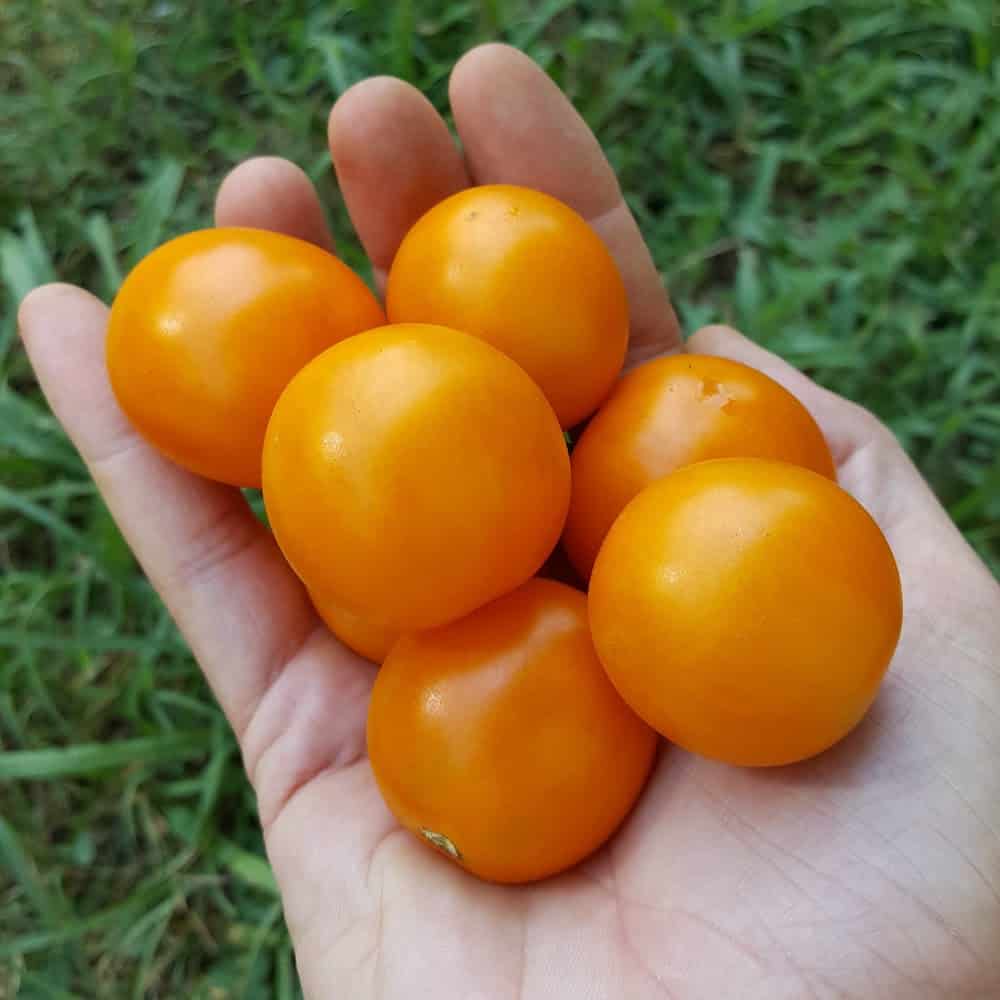
Color
There isn’t any hard and fast rule about tomato flavor and color. But based on my experience, below are my opinions of how color can affect flavor.
My recommendation is to try different colors and varieties any time you have an opportunity so you can make your own decisions about what you like as ‘tasting good’ can vary a lot from person to person.
Tomatoes with high acidity are more tart. Sweeter tomatoes are usually less acidic. But flavor is not as simple as low or high acidity, it’s a combination of aroma, dissolved solids, and flavonoids within the tomato. So a ‘low-acid taste’ does not mean the tomato is actually low acid.
With the exception of blue, striping usually does not affect the flavor of the tomato. The fruit will still be primarily one of the colors below.
Red tomatoes: flavor runs the gamut from mild and watery to rich and meaty. Some red tomatoes taste like tomato sauce and others are sweet like candy.
Green when ripe tomatoes: Tendency toward tartness, can be very mild to intensely tart. Some varieties stand out for balanced tart and sweetness.
Yellow/Orange: I am putting yellow-orange as one color because often tomatoes that look orange are called yellow. I really like the flavor of a yellow-orange tomato. They tend to be a milder, low acid version of the classic tomato flavor although I have had some that are very sweet.
White: Many white tomatoes are bland, but some are surprisingly sweet. It’s very dependent on variety.
Black/Brown/Purple: Black or purple varieties tend to be very flavorful with a generous balance of acidity, sweet, and tart.
Blue: Even just blue striping can affect the flavor due to the anthocyanin that causes the blue coloring. The bitterness is more obvious in some varieties than others, and if it stands out for flavor the description in your seed catalog will likely mention it.
Other factors that affect flavor
Environment: More sun means better tasting tomatoes. This is why early ripening tomatoes are usually less tasty. They ripen during shorter cooler days. Healthier soil makes for healthier plants and therefore, tastier tomatoes. Overwatering can also cause diluted flavor.
Growth habit: More leaves means more chlorophyll which takes up energy from the sun and converts it into food for the plant. And that means tastier tomatoes for us. Indeterminates and dwarf tomatoes have a higher leaf to fruit ratio, so they tend to have more flavor as compared to determinate plants.
Summary
-
- Know the length of your growing season and choose appropriately.
- Sway toward a growth habit that is appropriate for your growing method.
- Choose the type of fruit most appropriate for your eating habits.
- Narrow based on color or taste preference.
- If you have a long growing season, think about adding in an early variety (+/- determinate) for two crops of tomatoes.
- If you have space, try something different. You’ll never know what you’re missing if you don’t grow it!
Next steps:
Now I must know…what is your favorite tomato variety to grow?
Leave me a comment below!


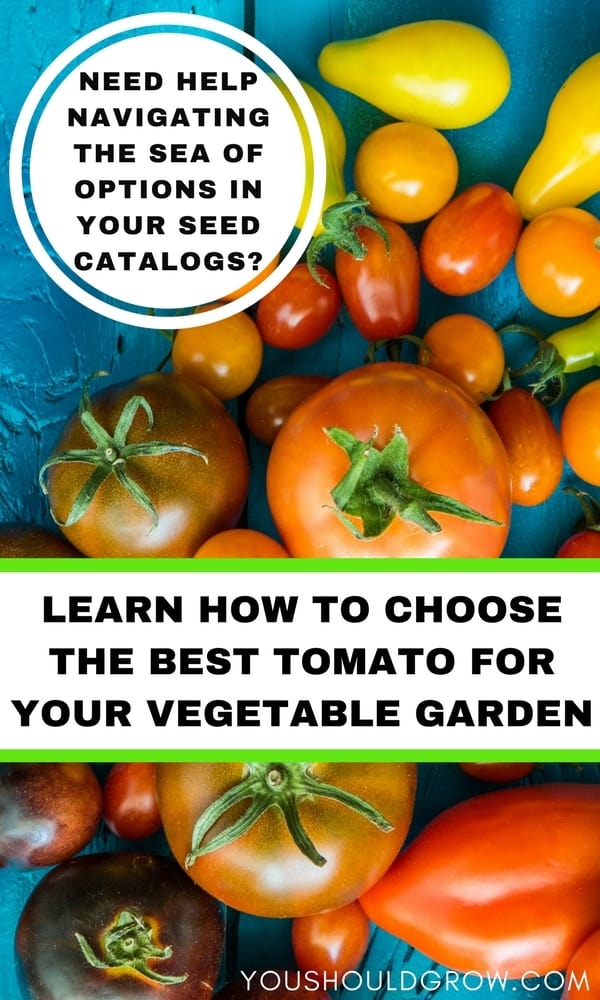

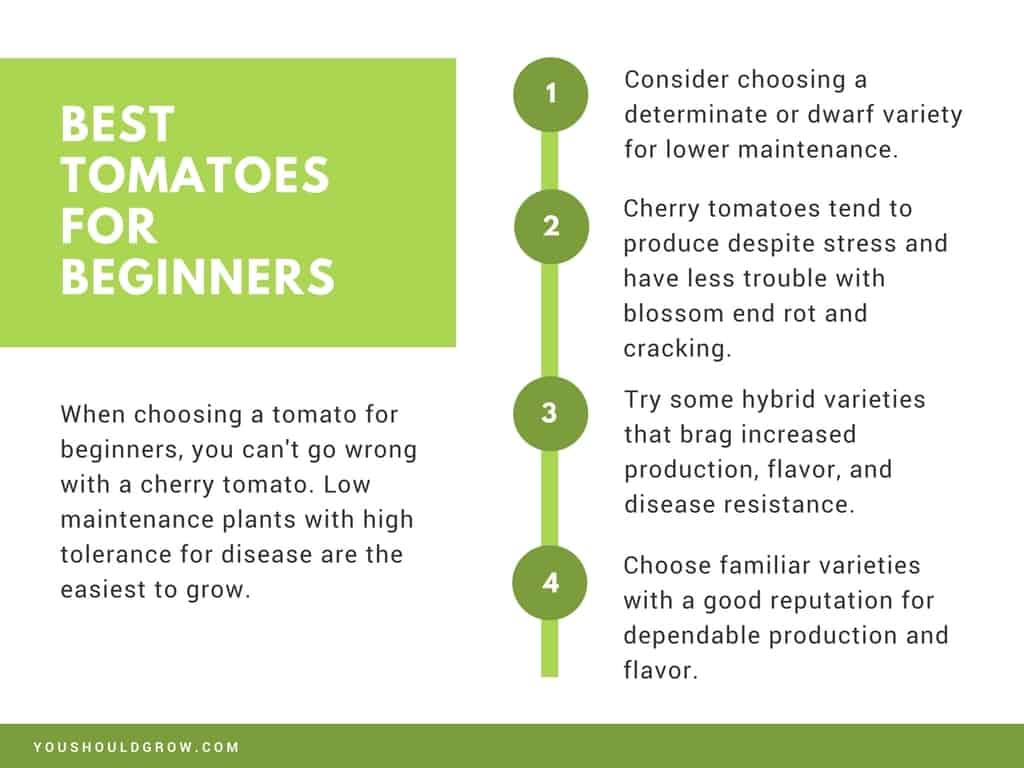
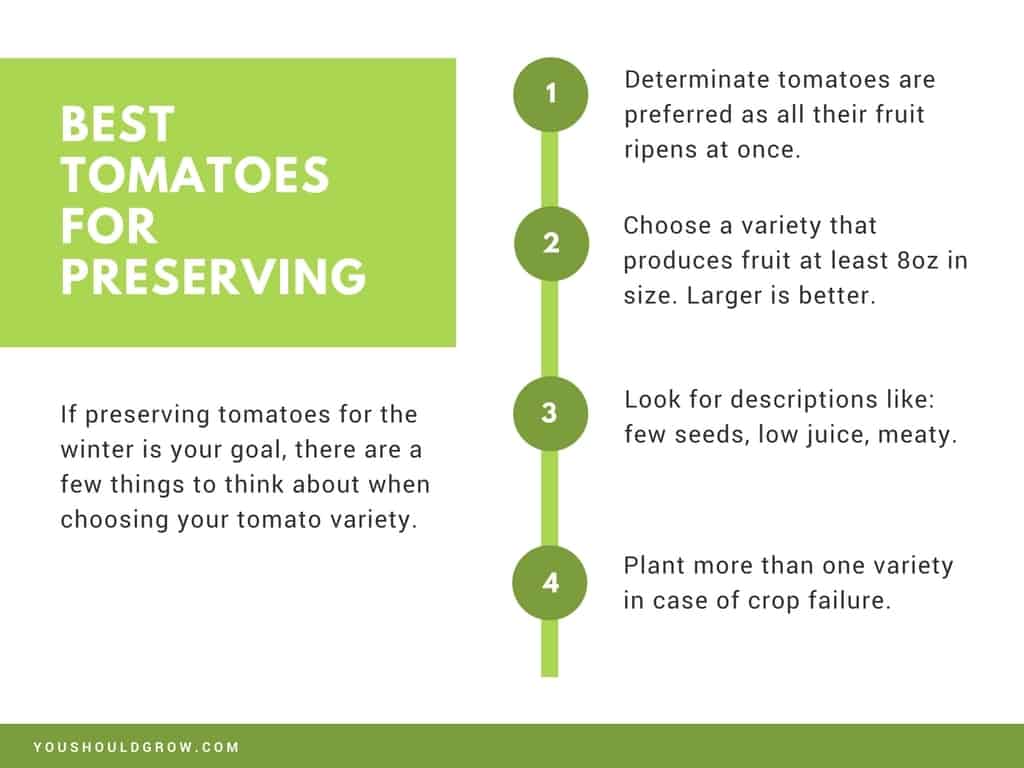
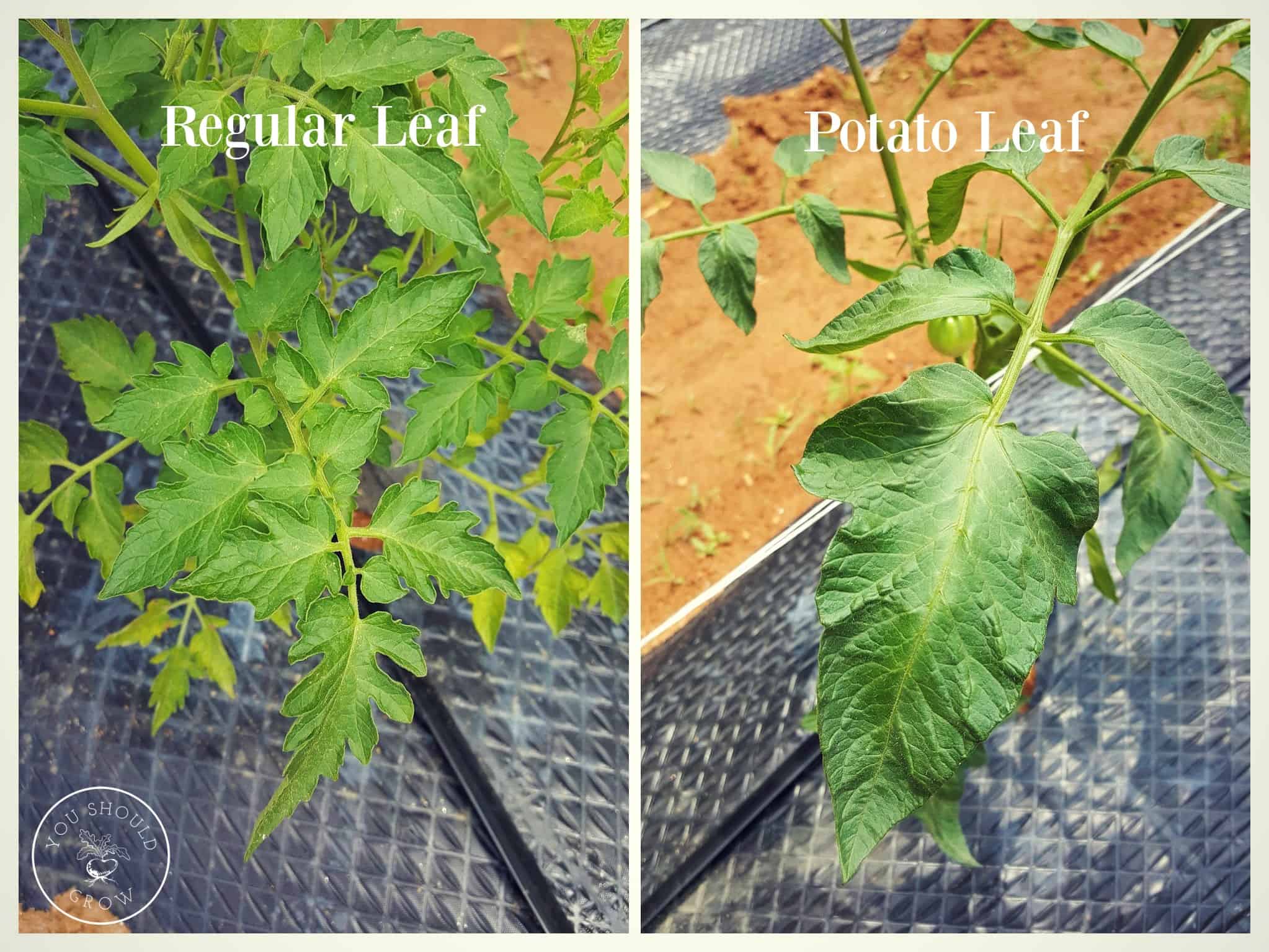
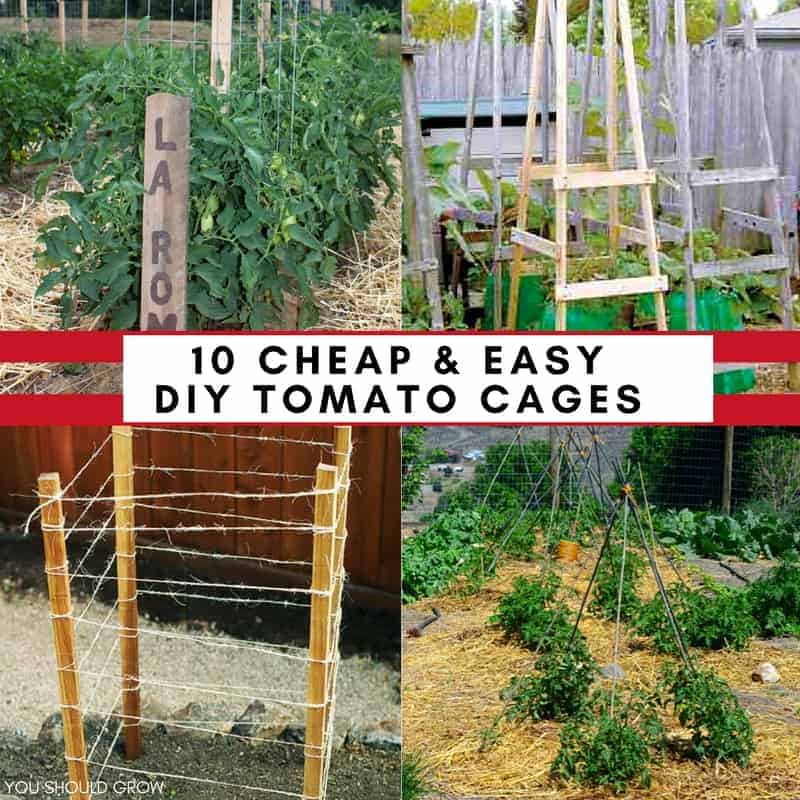
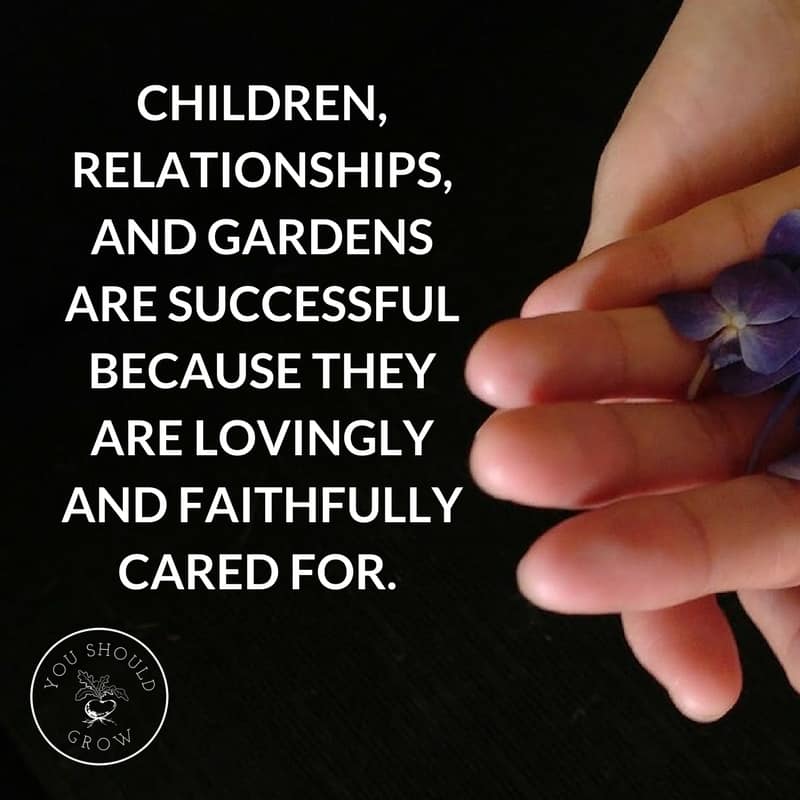
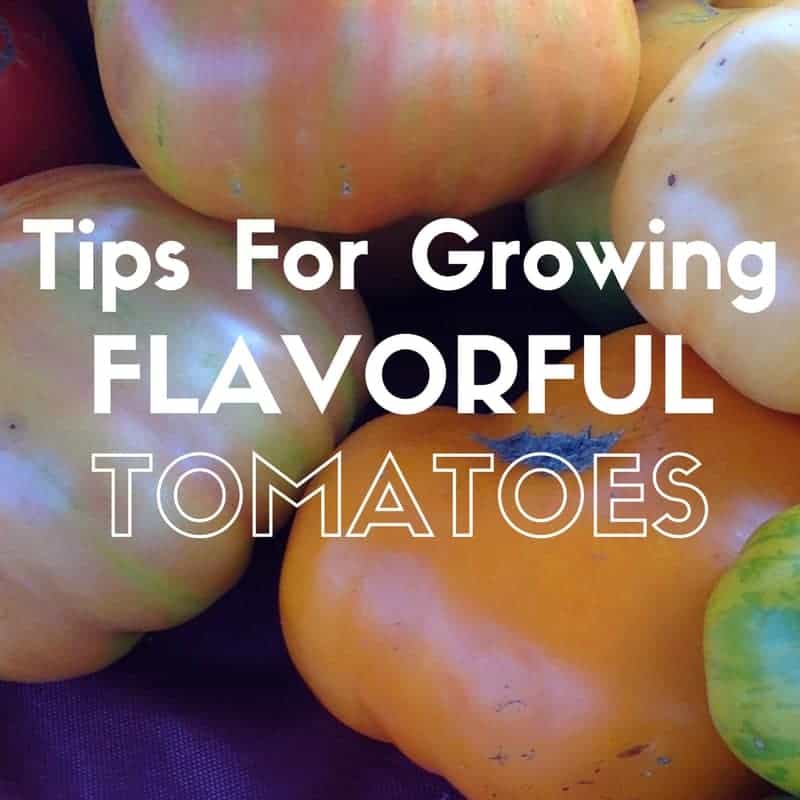
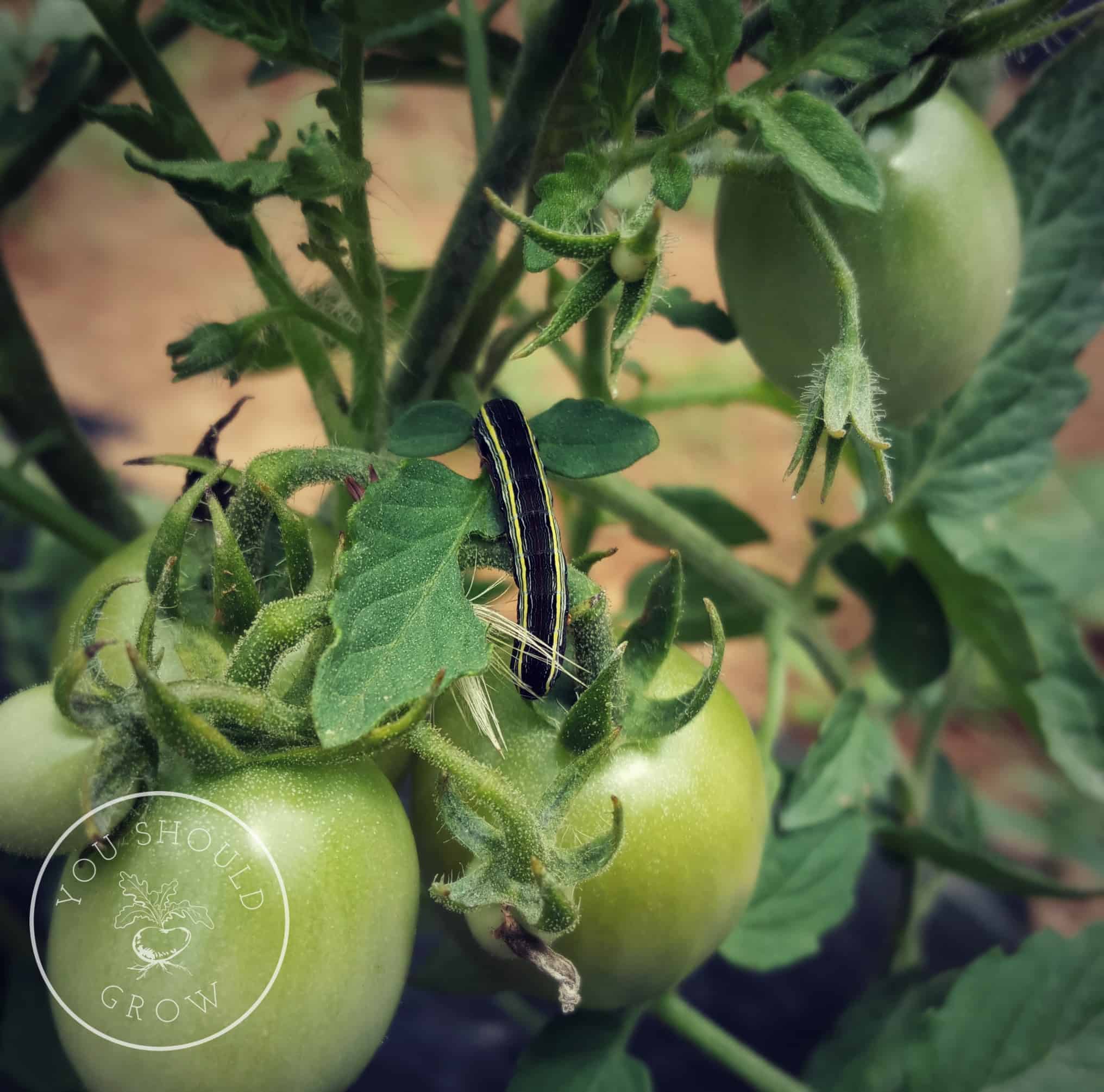
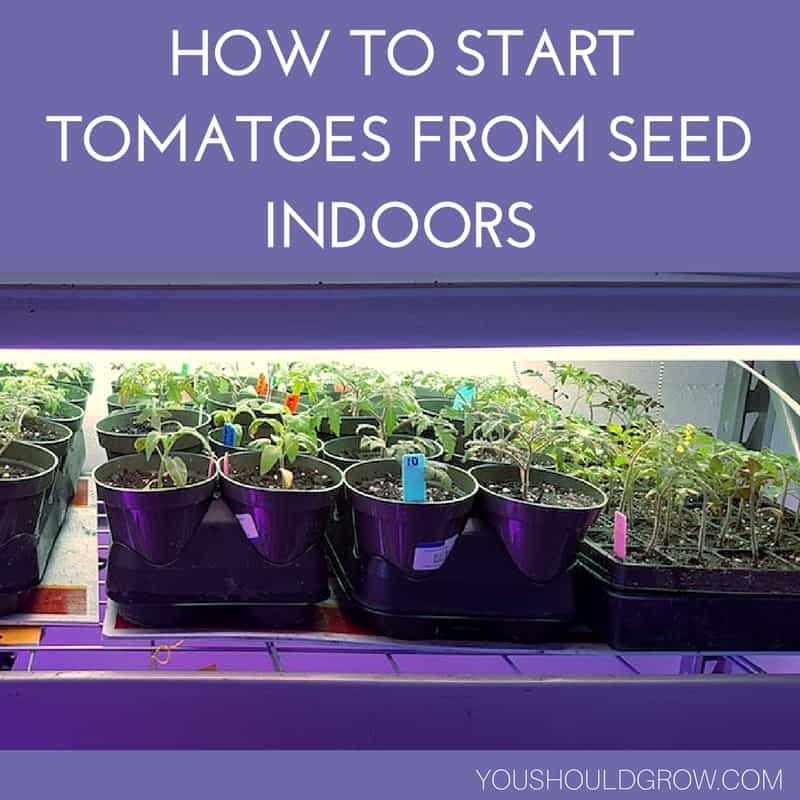

Currently, my favorite tomato varieties are Early Girl and Better Boy and have grown numerous cherry varieties. I live in zip code 77377 and would like to know of other successful varieties including the most successful ccherry types
Hi Brad, here’s a link to 5 of our favorite tomatoes to grow. I would also recommend Big Beef and Polbig – both are big red round tomatoes with good flavor. You’ll never go wrong with Sungold or Chocolate Cherry tomatoes. If you want something really different, try Brad’s Atomic Grape, Green Zebra, or Wapsipinicon Peach. 😉
I have grown Early Girl tomatoes successfully for years. They are the right size (6-8 oz), the right color, (nice red), and have a firm skin that does not crack on the vine and lasts long on the kitchen counter. This year, there are no Early Girl tomatoes available. “(Seeds did not sprout)”. What tomato would you suggest for a substitute.
I like Big Beef, but it may take longer. Rutgers and Better Boy (indeterminates), Stupice and Glacier (compact determinates) might also be good substitutes.